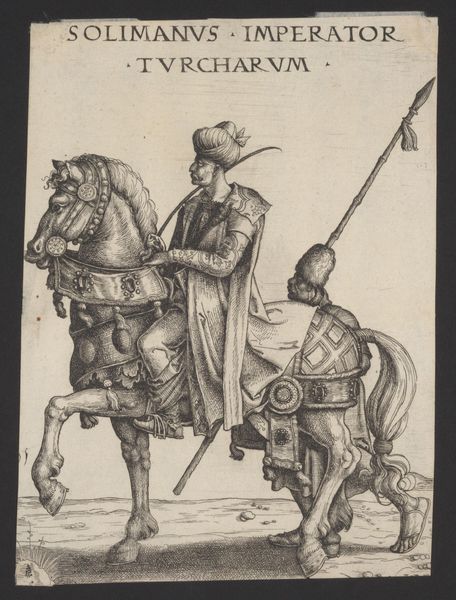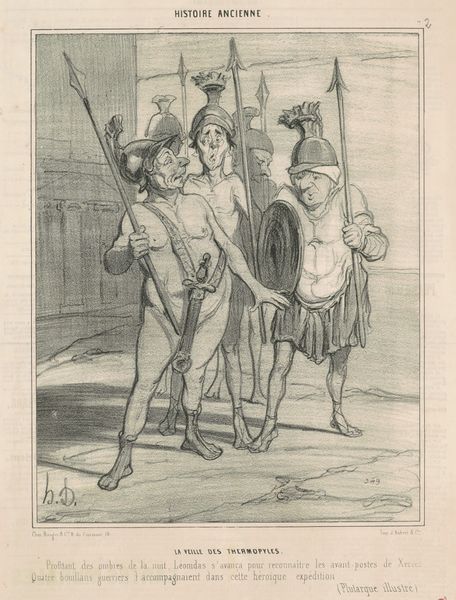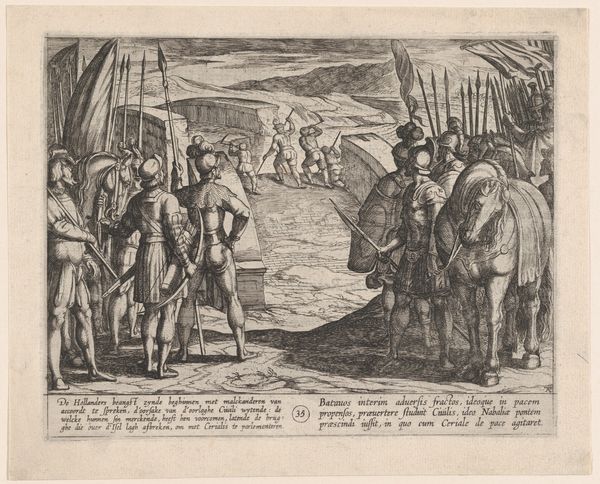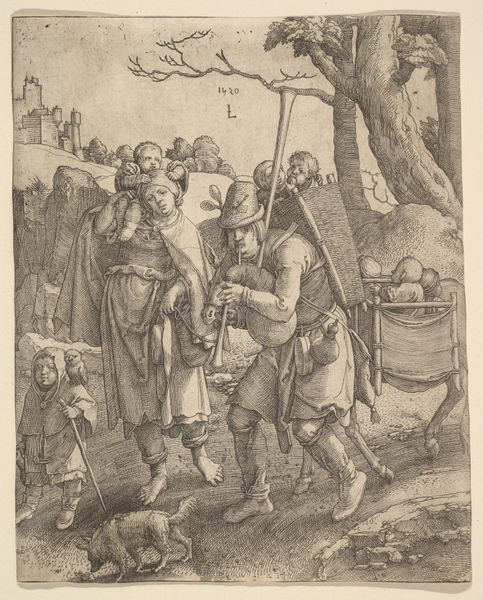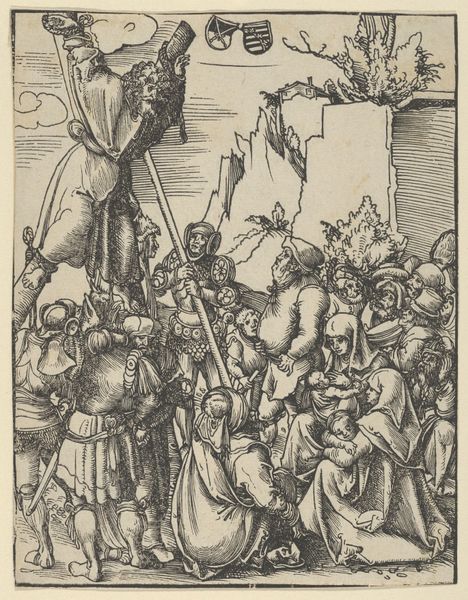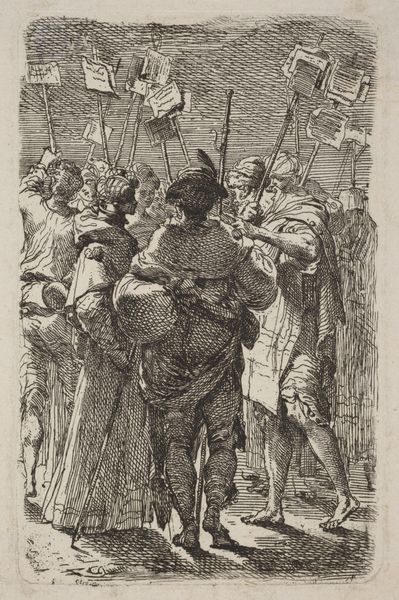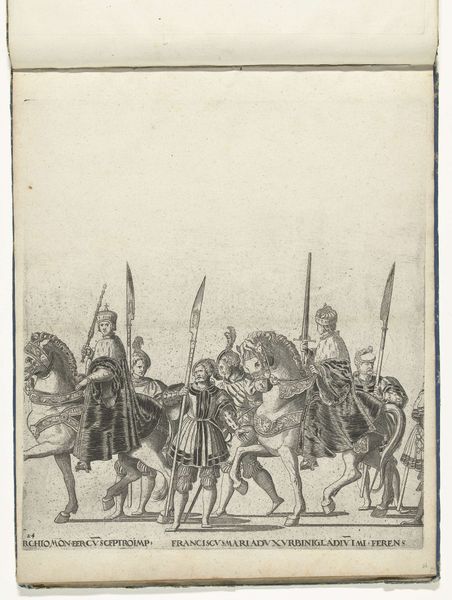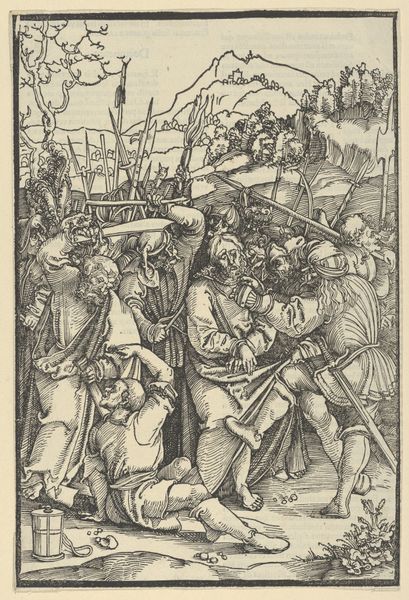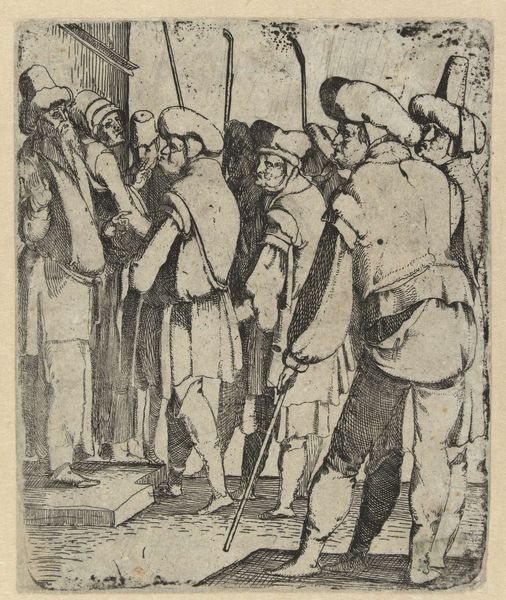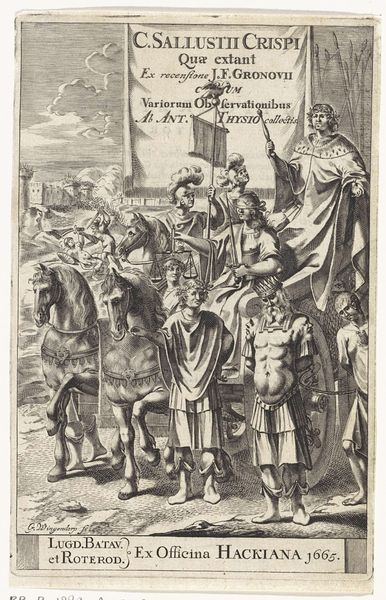
Copyright: National Gallery of Art: CC0 1.0
Editor: So this is Honoré Daumier's "A Paris nous ne pouvions... aller a Versailles..." from 1871. It’s a lithograph, so a print. The mood is bleak; these figures are so dejected. What's your interpretation of this piece? Curator: This print speaks volumes about the material conditions of its creation and consumption. Lithography allowed for mass production and dissemination, bringing political commentary directly to the Parisian public during a tumultuous time. Consider the economic and social conditions that enabled its widespread consumption. Who had access to these images, and how did this influence their reception of the depicted event? Editor: It’s interesting to consider who the intended audience was, given the political climate and the actual costs of producing these prints. Were they aimed at the elite, the working class, or somewhere in between? Curator: Precisely. Daumier uses lithography, a technique accessible to a wider audience than traditional painting, to depict a politically charged moment. The act of mass-producing and distributing such images challenges the very idea of art as a luxury good. What kind of labor went into this? How did the availability of materials shape the final product? Editor: It shifts the focus from individual artistic genius to a collaborative effort influenced by material constraints and political urgencies. Looking closer at the lines, they seem quickly drawn, expressive but almost desperate. Does that urgency also play into the material aspect, the speed needed to get the message out? Curator: Exactly! The medium itself becomes a vehicle for protest, bypassing traditional channels controlled by the elite. Understanding the conditions of its creation allows us to interpret its meaning on a much deeper level, revealing the interconnectedness of art, labor, and political resistance. Editor: That makes so much sense. I'm now understanding how to look at not only what the art represents, but *how* it was made. Curator: I think focusing on the material realities of production expands our appreciation. We have both learned how process defines meaning.
Comments
No comments
Be the first to comment and join the conversation on the ultimate creative platform.
